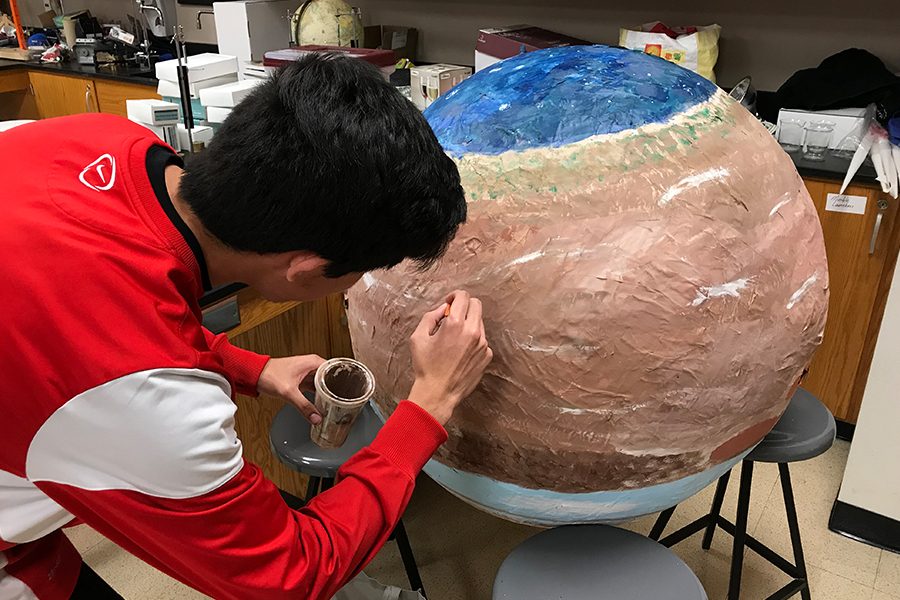Scaled down, model solar system to stretch for miles
Astronomy students are working on a scale model of the solar system. The students aim to create a model that stretches from the stairs to the gym.
February 19, 2019
Most models of the solar system are relatively small and don’t accurately portray the immense amount of empty space. However, astronomy students are creating a 1 to 140 million scaled model of the solar system that attempts to do justice to the size of the solar system.
“The point of the project is to really illustrate on a kind of more grand scale the solar system and the size of it, but also how empty things are in between the planets,” teacher Kenric Davies said. “The sun is huge, the planets are small, and they’re really far apart from each other.”
For this project, students in all astronomy classes at Liberty and Centennial have been divided into groups. Each group is tasked with creating a model of a major object in the solar system. Models of the sun, the planets and their moons, the asteroid belt and even Halley’s Comet will be made by these various groups.
“I think the concept of a scale model of the solar system is cool,” senior Brandon Le said. “I’m unsure of how the final thing will turn out due to the varying amounts of effort all the groups are putting in.”
When completed, each group will have to place the model in the appropriate location proportionate to all other models. The sun will be placed in the rotunda and will have a diameter of 10 meters, a scale of 1 to 140 million compared to the real sun.
“My group is trying to make sure our scaling is calculated properly,” senior Carson Navalta said. “The biggest challenge is finding objects small enough that meet about the required scaled measurement.”
Every other model must be built to scale accordingly, in both size and distance. This means that this model of the solar system will span beyond the metroplex, from downtown Dallas to Tyler.
“When they finish the project, their models and all the fact sheets to go with it, we’re going to put them in position at all the locations like for example Jupiter is probably going to be at Lebanon Trail, we have something going to Independence, I think something’s going to be up in Little Elm,” Davies said. “So we’re trying to get businesses or schools that will help work with us. I think the part of this one away is going to be Sedna, one of the dwarf planets, which is going to be down in Tyler which is pretty far down south. So we’ll have our models on location on display for a given amount of time so people can see how big this project is.”






